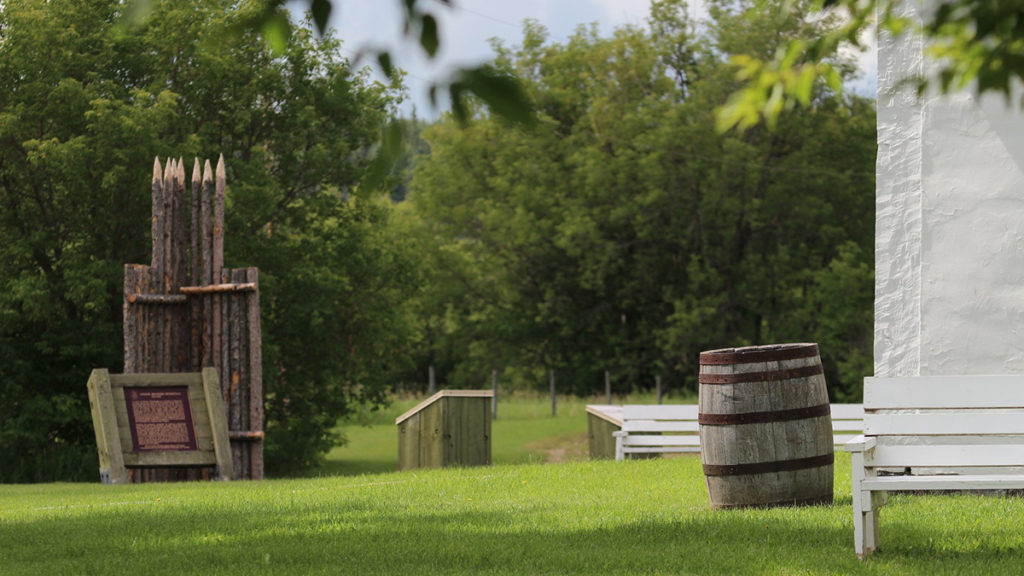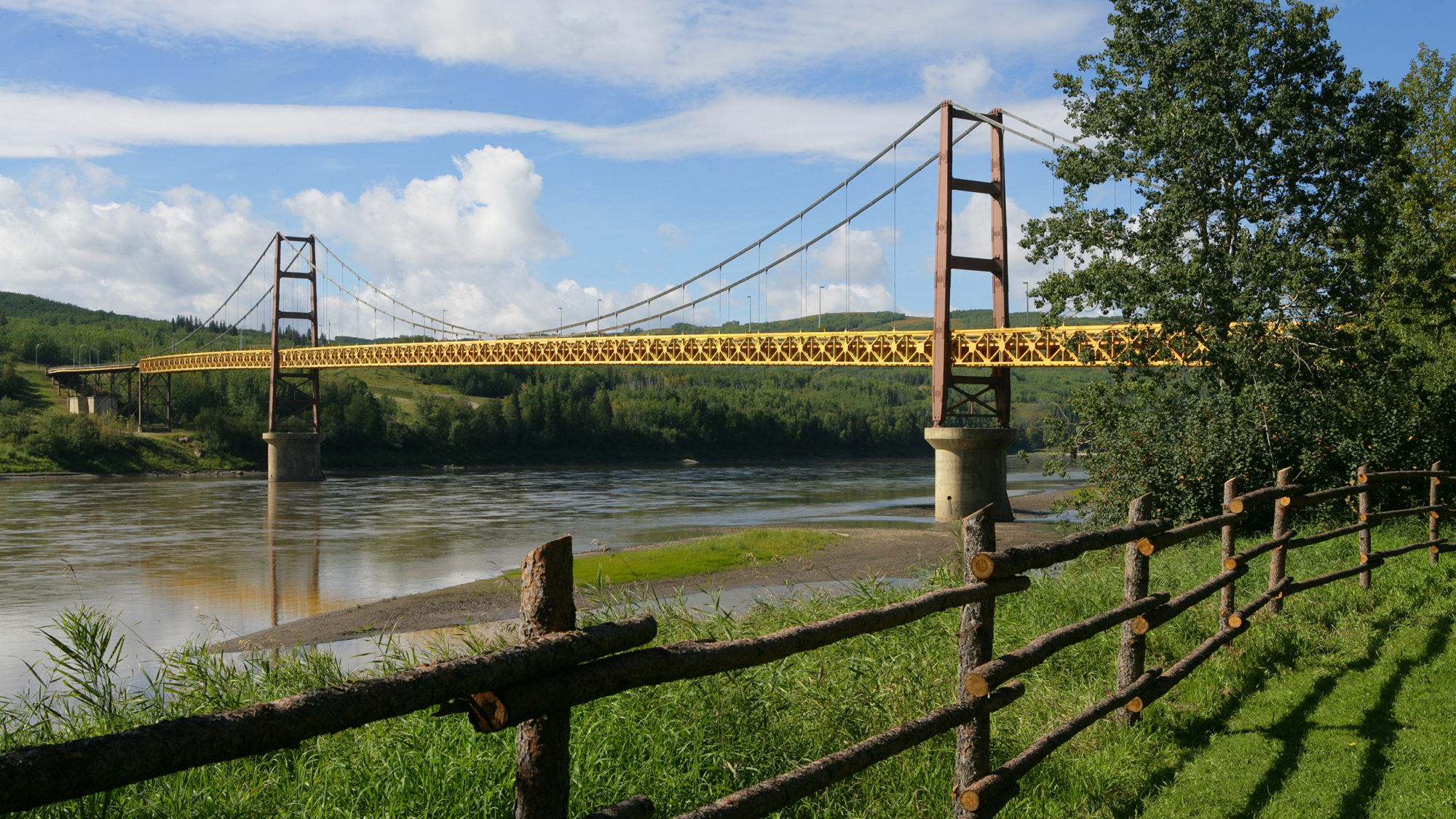They stand on the side of byways, in roadside pullouts, picnic grounds, museum yards, beside historic buildings, in our urban centres and in our most rural areas. They are the bronze plaques recounting the stories of Canada’s history.
Since 1919, the Historic Sites and Monuments Board of Canada has been commemorating the places, events, and people of national historic significance to the country. Starting in 1920 with Fort Anne National Historic Site in Nova Scotia, there are now more than 900 commemorations across Canada. The plaques can present a challenge to maintain against the impacts of time and weather and isolation.
Enter the Parks Heritage Conservation Society (PHCS), a dedicated group of volunteers, mainly former or retired Parks Canada staff, who take time each summer to make sure the HSMBC plaques in Alberta remain in good shape and standing for generations to come.
For the last 25 summers, they have sent crews of volunteers to the most urban and remote corners of Alberta to report on the conditions of the plaques and restore them—with a fresh coat of paint and some cleaning. Some of these volunteers have tended to dozens of plaques and they’ve compiled a list of some of their favourite plaque sites in northern Alberta.
Many of these plaques are fixtures at Provincial Historic Sites and community museums. Be sure to check before heading out if these facilities are open. Most locations have grounds, trails and park-like settings available for public use. Please respect any posted guidelines and keep COVID-safe travel in mind. Refrain from entering places which are closed or otherwise not accessible to visitors.
FORT DUNVEGAN
The plaque sits before the remains of the fur trade post in Historic Dunvegan Provincial Park near the bridge across the mighty Peace (which itself is an historic engineering achievement in Alberta). The setting offers a respite for drivers travelling on #2 Highway between Grande Prairie and Peace River. The provincial park includes walking trails, a visitor centre, heritage buildings with interpretation and summer seasonal campground.
BLACK PIONEER IMMIGRATION IN ALBERTA
This plaque commemorates the immigration of Black Americans to the Canadian prairies between 1908 and 1911 and their subsequent forging of vibrant farming communities. The story of Amber Valley is presented in the Amber Valley Museum located within its Community Hall.
VICTORIA DISTRICT
At this ancient indigenous meeting place, a Methodist Mission was founded in 1863. It was soon joined by a Hudson’s Bay Company trading post. These formed the nucleus for Metis and European, particularly Ukrainian, agricultural communities, characterized respectively by the use of river and square lots. The cultural landscape still evokes these successive chapters in the history of Prairie settlement. The plaque is located at the junction of highway 855 near Pakan, Alberta. The Victoria Settlement Provincial Historic Site offers trails, a visitor centre and camping areas nearby along the North Saskatchewan River.

FORT CHIPEWYAN
This plaque rests in a cairn atop a bedrock outcrop near the location of the historic fur trading post. A fly-in community, no roads lead to Fort Chip in the summer. Winter makes for an exciting road trip along ice roads north from Fort McMurray or south from Fort Smith, N.W.T. Fort Chipewyan is the oldest established community in Alberta scenically located along Lake Athabasca’s shores and the Peace-Athabasca Delta in Wood Buffalo National Park.
FROG LAKE
Frog Lake National Historic Site is an archaeological and historic site located in the community of Frog Lake, north-eastern Alberta, near the Saskatchewan border. The site is associated with a conflict that occurred between the Plains Cree and Canadian officials during the 1885 North-West Resistance. There are no standing structures on site, however the settlement’s remains are evident. Low rolling hills and valleys, lakes and woods surround the site which is marked by a cairn and plaque.
“PUNCH” DICKINS
For nearly half a century, the legendary “Punch” Dickins played a leading role in Canadian aviation, gaining renown in the 1920s and 1930s as a pioneering bush pilot. He flew vast distances in Canada’s North, demonstrating the feasibility of flight in remote areas, the coldest weather, and the most difficult landing conditions. His various endeavours helped make Canada a world leader in frontier aviation. His plaque is in the Snye Point Park, overlooking the Clearwater River in Fort McMurray, Alberta.
WILLIAM ALBRIGHT
The plaque is on the grounds of the Beaverlodge Research Farm, Beaverlodge, Alberta, a satellite research centre of the Lacombe Research and Development Centre. A graduate of the Ontario Agricultural College, William Albright was editor of the Farmer’s Advocate. In 1913, he moved west and established the Beaverlodge Experimental Station in 1917. As superintendent of the station, he made significant contributions to western agriculture.
Written by Kevin Gedling and Pat Carroll of the SW NWT Field Unit of Parks Canada, with contributions from members of the Parks Heritage Conservation Society.
